Editors’ Picks




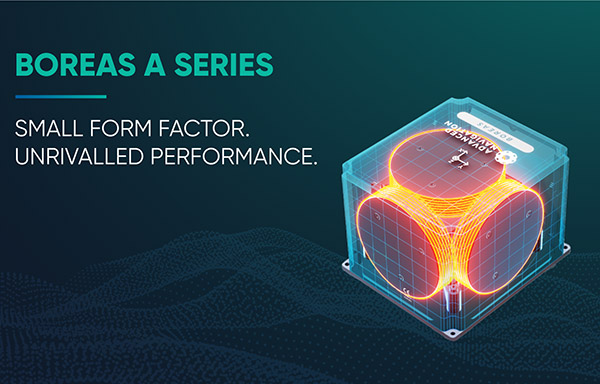
Found in Robotics News & Content, with a score of 20.36
Advanced Navigation, which develops artificial intelligence for robotic and navigation technologies, today announced the expansion of its Boreas digital fiber-optic gyroscope, or DFOG, range with the new A Series. “The Boreas A90 and A70 are strategic-grade inertial measurement units (IMUs) that deliver acceleration and orientation with superior accuracy, stability, and reliability under all conditions with no reliance on GNSS [global navigation satellite systems],” claimed the company in a release. “They also feature automatic gyrocompassing with industry-leading reductions in size, weight, power and cost (SWaP-C) compared to competing systems on the market.” “Our world-first Boreas DFOG technology represented a step-change for…

Found in Robotics News & Content, with a score of 20.32
…for AMRs. Offering significant advantages over other forms of navigation such as magnetic tape, QR codes, and traditional 2D SLAM that require additional infrastructure to function, Visual SLAM AMRs are being embraced by companies to handle an expanding range of production and distribution tasks, the company said. ABB developed Visual SLAM AMRs in collaboration with partner Sevensense Robotics, a provider of AI and 3D visual technology. The technology is being incorporated in ABB’s latest generation AMRs, the AMR T702V, from Q3 2023, and the AMR P604V, from Q4 2023. These will be followed by other AMR products incorporating Visual SLAM…
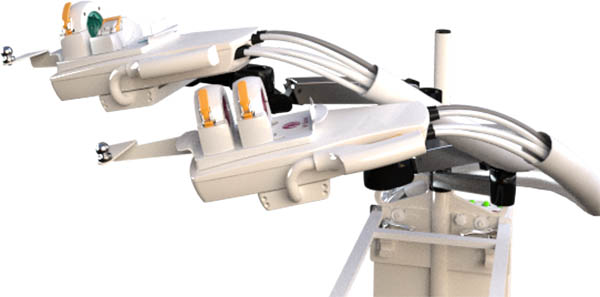
Found in Robotics News & Content, with a score of 20.29
Stereotaxis Inc. today announced that its Genesis Robotic Magnetic Navigation system has been used successfully to treat patients at Fred & Lena Meijer Heart Center in Grand Rapids, Mich. Electrophysiologists at Corewell Health, which the Heart Center is a part of, have established a successful robotic cardiac ablation program, treating nearly 500 patients using advanced robotic technology. The hospital is now among the first in the world, and the first in Michigan, to offer the latest in RMN technology with the Genesis system, according to Saint Louis-based Sterotaxis. “Robotics is an integral part of our electrophysiology program at Corewell Health…
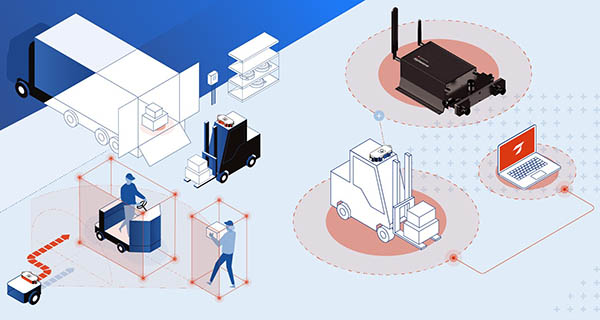
Found in Robotics News & Content, with a score of 20.23
…or VSLAM, positioning with its AI local perception and navigation technology, it said. Sevensense is a spin-off of the Swiss Federal Institute of Technology, ETH Zurich and develops VSLAM and navigation technologies for autonomous systems. The Zurich-based company said the Evaluation Kit gives autonomous mobile robots and autonomous guided vehicles a 360-degree view of their surroundings to offer <0.3 inches (<4 mm) precise and reliable positioning capabilities in all indoor and outdoor environments, even over uneven floors and ramps. The company has offered its navigation technologies to AMR makers in the past, but the kit was designed to make the…
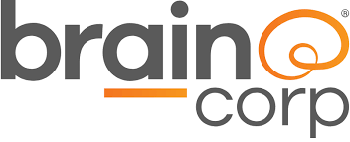
Found in Robotics Companies & Businesses, with a score of 20.08
…technology company specializing in the development of intelligent, autonomous navigation systems for everyday machines. The company was co-founded in 2009 by world-renowned computational neuroscientist, Dr. Eugene Izhikevich, and serial tech entrepreneur, Dr. Allen Gruber. Brain Corp’s initial work involved advanced R&D for Qualcomm Inc. and DARPA. The company is now focused on developing advanced machine learning and computer vision systems for the next generation of self-driving robots. Brain Corp is funded by the Softbank Vision Fund and Qualcomm Ventures, the investment arm of mobile technology leader, Qualcomm Inc. AI platform for the development, deployment, and management of intelligent machines
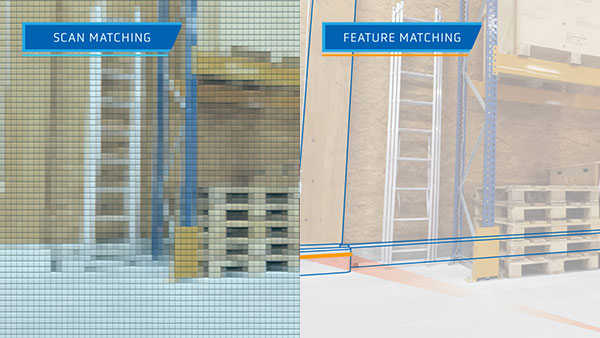
Found in Robotics News & Content, with a score of 19.30
…the difference between the two main types of natural navigation technologies (sometimes called free navigation) for AGVs – scan matching and feature matching – along with their respective pros and cons. What’s the difference between scan matching and feature matching? Put simply, today’s natural navigation technologies use one of two different methodologies: scan matching (sometimes called SLAM navigation) and feature matching (used by ANT®). How scan matching works With scan matching technology, measurements from the vehicle’s laser scanners are compared (matched) to the cells of a grid-based reference map of the environment. These cells can be compared to pixels in…
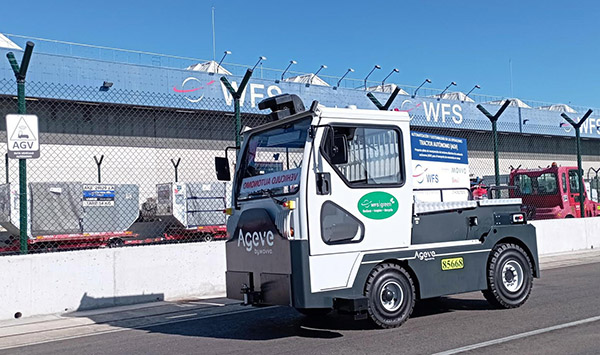
Found in Robotics News & Content, with a score of 19.28
…launched “ANT everywhere,” a new extension to its Autonomous Navigation Technology designed to allow mobile robots to effectively operate outdoors. “Prior to today, use cases such as transporting components or finished goods from one building to another have not been an easy proposition for AGV and AMR makers. ANT everywhere changes that,” stated Dr. Nicola Tomatis, CEO of BlueBotics. “This tightly integrated product extension enables manufacturers to offer new and robust 'ANT-driven' vehicles that are accurate, quick to install, and perform as expected, whatever the environment.” St-Sulpice, Switzerland-based BlueBotics said its natural feature navigation can help companies meet the challenge…
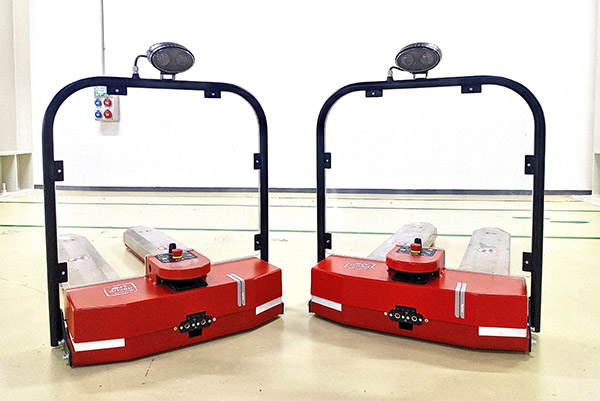
Found in Robotics News & Content, with a score of 19.16
…well as handle other loads, using safety lasers for navigation and obstacle avoidance. The company is a subsidiary of Weighpack, which provides automated packing systems, inspection systems, and products for loading and unloading heat-treatment furnaces. The Karter Lyft AMR. Source: Karter Karter AMRs offer agility, ease of integration The Karter AMRs are the first result of the company’s close technical partnership with BlueBotics SA. Since these vehicles use BlueBotics' Autonomous Navigation Technology (ANT) natural feature navigation, they do not require any permanent infrastructure changes such as laying magnetic tape or installing reflective targets, noted the companies. Capable of operating for…
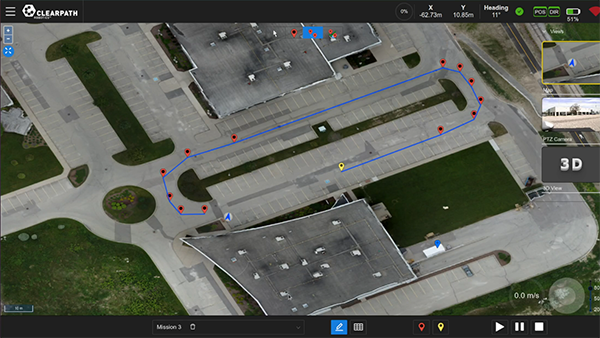
Found in Robotics News & Content, with a score of 18.93
…OutdoorNav, a software platform that it said provides GPS-based navigation for faster, more efficient autonomous vehicle development. The company said OutdoorNav is compatible with its outdoor mobile robots and third-party industrial vehicles. “Robotics product development can often be a difficult, sometimes harrowing experience,” stated Bryan Webb, president of Clearpath Robotics. “Building a robust navigation system is expensive and risky, and it may prevent you from bringing your product to market in a timely fashion.” “We built and designed OutdoorNav to streamline your development of autonomous vehicles,” he added. “You no longer need a full team of robotics navigation experts and…
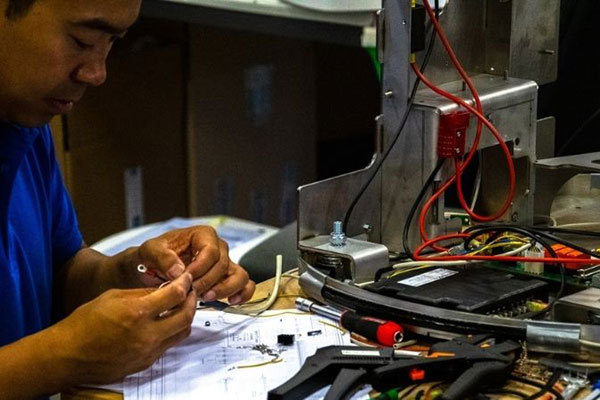
Found in Robotics News & Content, with a score of 18.82
…you to add extra functionality (on top of autonomous navigation), such as a conveyor belt or robotic arm. Keep in mind that not all hardware can be automated smoothly. Some manually-driven vehicles may not readily accept automation; for example, drive technology and control systems may need to be replaced with new versions that are easier to automate. Tip: Define what features your automated vehicle system will need, and which of its existing components are not automation-ready. This will help you assess whether you can add automated guidance easily, or whether it would be better to start from scratch. 2. What…

Found in Robotics Companies & Businesses, with a score of 18.70
…N10 mobile robot platform features LiDAR for natural features navigation. Configurations are available now for tugger, conveyor deck, and pallet stacker applications. Each configuration is also available with a dual mode manual driver platform for ultimate operational flexibility. In the tugger configuration, these robust vehicles can transport loads up to 10,000 pounds at speeds up to 4 mph with no changes to existing infrastructure, which makes them perfect for dynamic environments. The low profile Mylo series is engineered to tunnel under load handling frames, and hitches automatically with a programmable pin assembly. These compact mobile robots use magnetic tape guidance…
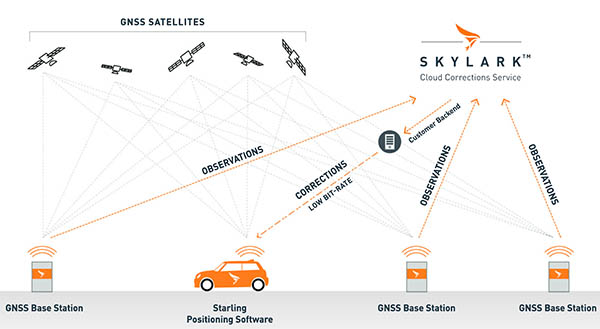
Found in Robotics News & Content, with a score of 17.91
Swift Navigation Inc. today announced that it has completed a $100 million Series D financing round. The San Francisco-based company has developed positioning technology for automotive and autonomous systems. Swift said its platform can improve location accuracy from several meters to centimeter-level and is used by millions of devices around the world. The company added that its technology is trusted by users across industries, enabling safer driving, improving efficiency for last-mile delivery and commercial transport operations, and increasing accuracy for mobile devices. It said precise positioning creates new possibilities for robotics, rail, and machine control. Platform offers centimeter-level accuracy Since…



